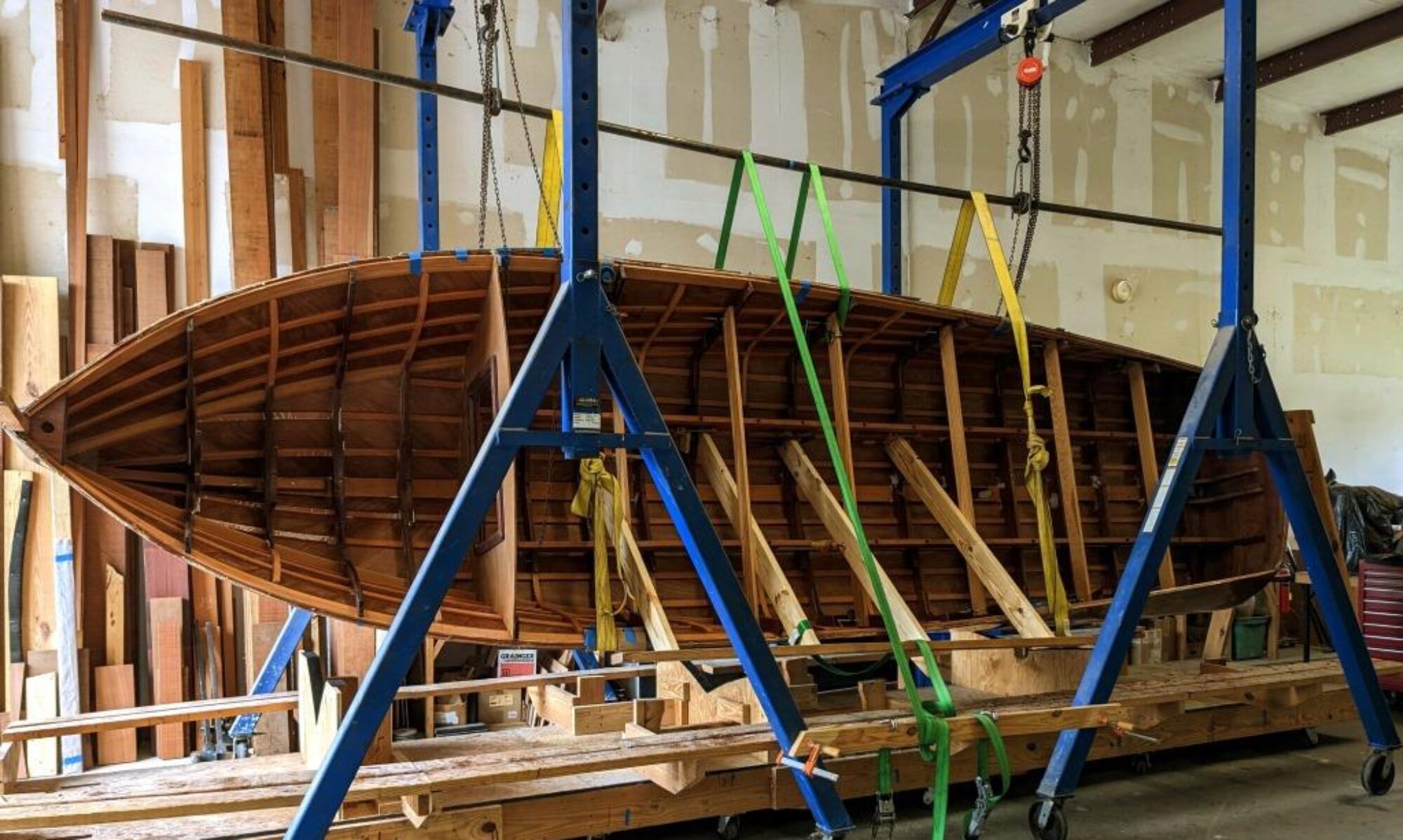
This week I had the opportunity to meet one of the more attractive boats in the Charleston area. “Stella” is a 2014 Chris Craft Launch 25, and she came in for some varnish on her brightwork. Here you can see a detail of the port toe rail after the first of two refresher coats.

I use Epifanes Clear Varnish. It’s a high gloss traditional marine spar varnish made from tung oil and resin. I think its the best of it’s kind. Some complain that its too thick, but I think once you get used to working with it, you can’t find a better varnish that levels out and lasts as well as this one does. Any quality spar varnish is going to have UV absorbers and HALS (Hindered Amine Light Stabilizers–because I knew you’d ask!). These are the additives that help keep sunlight from breaking down the finish. Here in the Southeastern U.S., we recommend at least two refresher coats per year to offset the impact of the sun’s harmful rays.

Now let’s take quick look to see how you can renew a finish with some “Scratch and Patch” work. First, take a look at the anchor locker cover. Notice how dull the finish is.

Also, note in this detail picture how the teak has gotten some blond patches due to water intrusion at the hinge pockets.

After sanding and taping, I’ve painted over any cracks in the finish with a 25% thinned mixture of varnish. This allows the varnish to penetrate through the cracks, and thanks to capillary action, most of the discoloration will disappear. Some areas may need some sanding to expose the wood grain a little more.

Finally, take a look at the lid after the first full coat. Amazing how a little TLC can bring the woodwork to life again. I think Stella’s will soon be ready for the prom!
